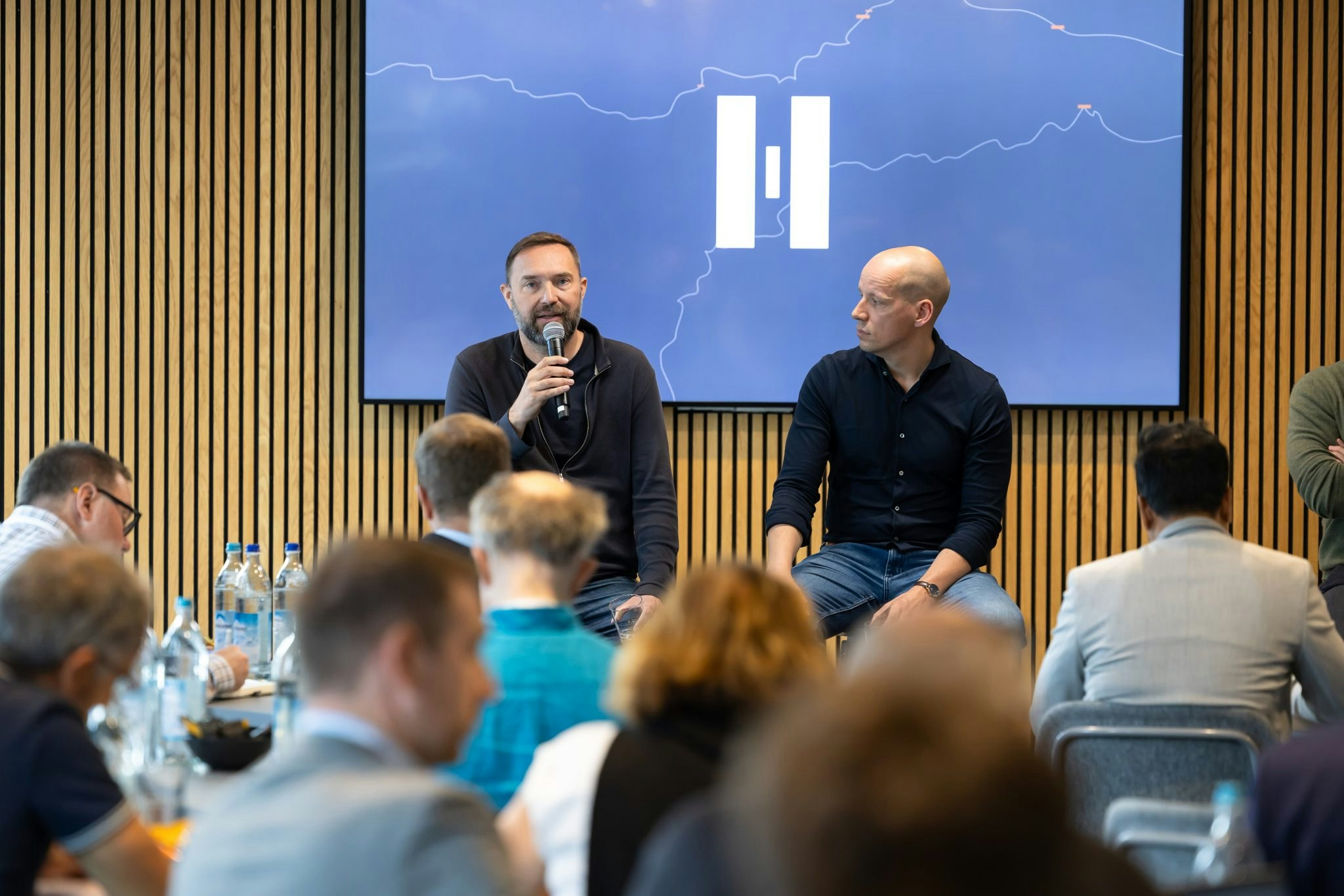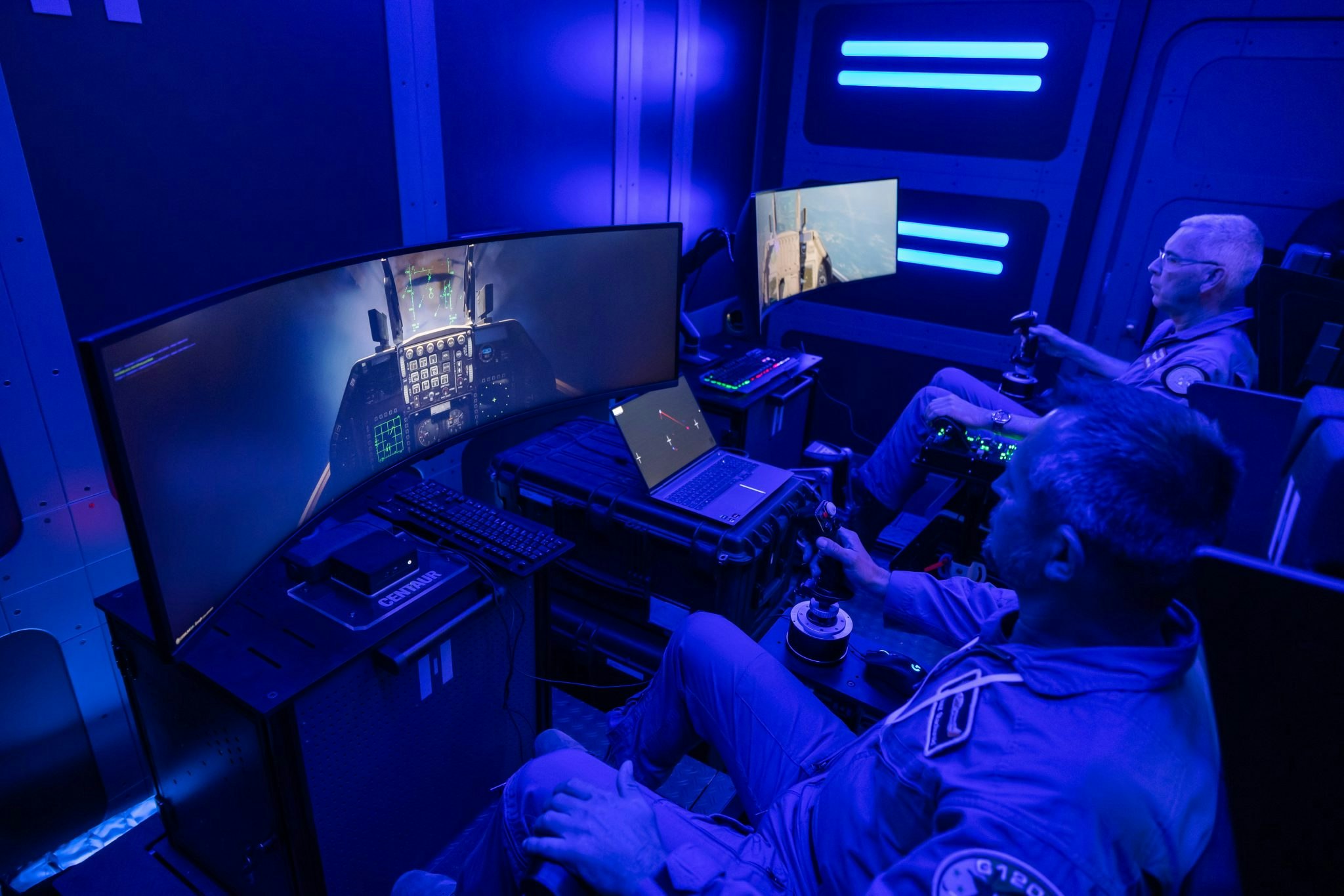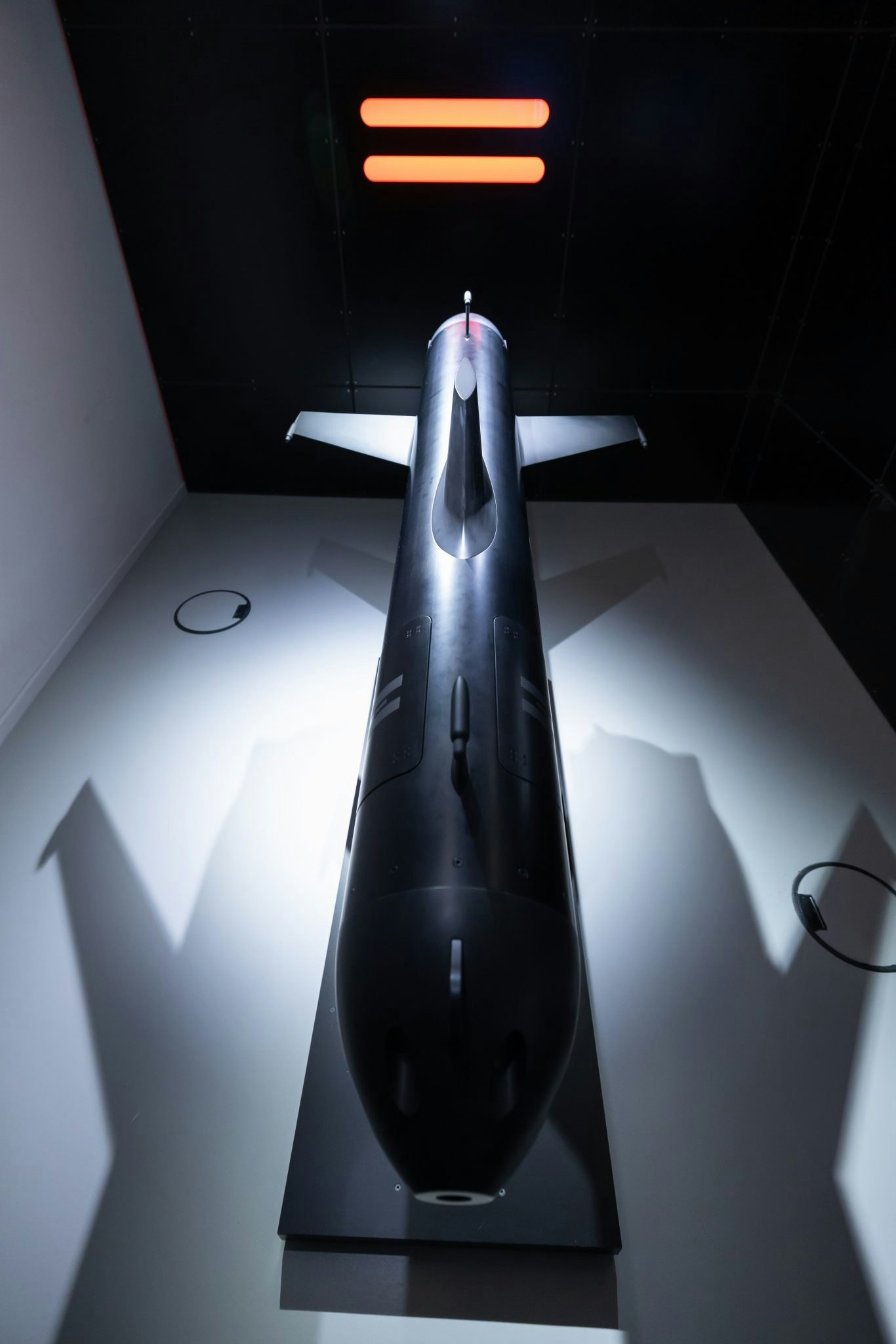As soon as I entered the room, I was warned against bringing my dictaphone inside.
As requested, I’d already stowed my phone away in a locker inside AI defence unicorn Helsing’s Munich HQ but, contrary to what had been agreed, one employee was trying to be extra secure.
Thankfully, the mixup was quickly resolved and I was allowed to keep my recorder with me — but the misunderstanding embodied the German defence company’s longstanding commitment to utmost secrecy.
But for the first time ever, on a chilly Wednesday in the Bavarian capital, the four-year-old startup — which builds AI-powered battlefield software, attack drones and underwater surveillance systems — invited journalists inside its sleek office building for a “media day”.
A rare look behind the curtain of the typically opaque startup, the media day marks a big change in Helsing’s strategy. The startup was founded in 2021 and has since grown into a company of about 600 people (plus about 275 with its acquisition of German aircraft manufacturer Grob Aircraft last month) with a whopping €12bn valuation.
Two years ago, the company, which was initially only focused on software, realised it had to start building hardware as a vehicle to deliver its AI, cofounder and co-CEO Gundbert Scherf told the room full of journalists. “While we can integrate with existing systems, frankly, the users demanded these kinds of capabilities much more quickly,” he said. The progress of a lot of the AI and software capabilities “also has been much quicker, and so we think we had to accelerate.”
Late last year Helsing announced its first hardware product: an autonomous strike drone HX-2, with a pledge to send thousands to Ukraine. Since then, the company has also unveiled an autonomous underwater surveillance system in the form of a glider fitted with its AI to scope out enemy whereabouts.
As the company has grown, it’s attracted more scrutiny — and questions around what it’s actually building.
Rheinmetall partnership dissolution, the US and sovereignty
Though Helsing is eager to position itself as a pan-European company, its roots are firmly German. All three of its cofounders are German and started the company in its home base in Munich, the Bavarian capital known for its deeptech and industrial expertise. Germany also remains a key customer and partner for the startup. As if underscoring the point, journalists arriving on the day were offered a breakfast of local delicacies like pretzels.
The startup also has offices in Paris and the UK. And when it comes to the company’s relationship with the US — by far the largest defence market — Helsing calls itself a “transatlantic company”, but one that is “European controlled” and is a “fully European talent-based company,” Scherf said. Helsing said it does not have any contracts with the US government.

Conscious of growing concerns over European tech sovereignty, Scherf says it is “super apparent that we need to be sovereign when it comes to targeting. Targeting is [an absolutely] core domain in modern defence — you need to be able to detect your targets, […] and that means you’ve got to be able to do this, from our point of view, in almost real time, from space; you’ve got to be able to link that to your land, integrate a kill chain.”
Meanwhile maritime conflicts and threats are rising, with escalating concerns of undersea cable sabotage.
Scherf adds that “it’s not acceptable that we are still not clear what’s happening underwater” — an area Russia has been investing in. “Beyond critical infrastructure, of course, also some of the most potent threats are subsurface that have to do with our detection,” Scherf says — teasing the company’s new underwater surveillance gliders.
The startup makes money from contracts and partnerships, which it says it has with the government of countries like Germany, Estonia, the UK and Ukraine. Helsing also has a partnership with one of its investors, Swedish defence contractor Saab.
But one partnership it no longer has: German defence prime Rheinmetall. Helsing’s deal with the arms company reportedly fell apart last year — and just last month, Rheinmetall instead announced a partnership with rival US defence titan Anduril.
Both Scherf and cofounder and co-CEO Torsten Reil danced around the question. Without naming Rheinmetall, Reil said “for partnerships to work, incentives need to be aligned and […] the relative speeds of the partners also need to work,” he said. “Some partnerships work less so maybe within a time window, and that’s the reason for some partnerships continuing, and others not.”
He says “we invest a lot in partnerships,” highlighting Helsing’s “close” partnerships with Saab and French OpenAI challenger Mistral.
‘Autonomy probably is nearer than people think’
We’re shuffled between small, darkly-lit rooms showcasing Helsing’s technologies for different domains — a real-size undersea glider in a small room downstairs, a strike drone suspended in the air on a display stand. (Journalists were even given tiny models of these products after our visit to get a better look.)

In a room designed to look like a mock military base of sorts, two former pilots performed a demo of a faux fight between two other jets operated by Helsing’s Centaur AI agent. The fight was, frankly, kind of boring — both sides slowly evaded shots — but it seemed to illustrate what Scherf said earlier in the day: “Autonomy probably is nearer than people think.”
Helsing said that the company recently performed autonomous tests, letting its AI system take over control and perform a turn in a fighter jet over the Baltic sea during May and June.
Apart from the air, Helsing is betting on going underwater: its subsea glider, announced earlier this year, moves through the water not by engines but through changing its buoyancy. It is equipped with Helsing’s Lura AI model — trained on underwater acoustic data to help identify sounds and determine if they’re enemy vessels or not. Helsing claims the glider has a 90% classification accuracy.
Last week Helsing announced plans for a new manufacturing facility in Plymouth, UK, to produce them — part of its £350m investment in the UK. “We’re already producing some now, we have some that we’re trialing,” Amelia Gould, general manager of maritime at Helsing, said. “The idea behind the production facility […] is to move from the prototypes to that sort of more resilient, iterative manufacture” process.

“We’re ready for customers to buy now,” she said, adding that there is an integration component they need to do. However Helsing said the company is still fielding interest from “several allied navies” and are working with them before confirming hardware production orders.
Drone failure rates and feedback
It hasn’t been smooth sailing for Helsing: some Ukrainian soldiers have criticised the Kamikaze HF-1 drone — built by another company but furnished with Helsing’s AI to strike targets — for its performance and price.
“You really have to go in humble and willing to learn and iterate with the user,” Scherf says of Ukraine. “You get very, very concrete feedback, almost at a technical level.”
Simon Brünjes, Helsing’s vice president of sales, says it has delivered 1,950 of the HF-1 drones, and is now changing to the new in-house-made HX-2 drone. He described Ukraine as a “steep learning curve,” but added that right now the “feedback is good.” Brünjes said the new drone could “technically” perform its missions autonomously, but Helsing is not employing this strategy right now; it is still using a human in control.
When I asked about the new HX-2 drone’s failure rate, Brünjes says that in Germany, it is “not significant.”
In Ukraine, “you need weekly, biweekly updates on this. This is something which is constantly changing […] We have people operating close to the front line […] getting the newest information back to our engineering teams. We have engineering teams there who are doing overnight changes to the system,” he said. “It’s much more about this capability than to say, ‘Oh, 4-5% [failure rate].’”
Helsing declined to specify the HX-2’s cost, but said its ambition was to make it cheaper than the Russian Lancet drone, which reports put to be around $35k apiece.
However, Helsing’s production capacity for its new drones is currently far below its target of 1,000 drones per month announced in February — right now it’s 450 — owing to workforce shortages, Brünjes said.
Future projects: internal incubator, acquisitions
In early June, the company acquired fellow German aircraft manufacturer Grob Aircraft — a move that seems to fit with how Helsing is thinking about acquisitions moving forward.
“The things we are looking at are more in the domain of traditional players which have invested and usually have talent which have worked on certain capabilities for decades,” cofounder Niklas Köhler, who serves as president and chief product officer, says. “I don’t think we will see a lot of consolidation on the, let’s say, software-first technology companies. […] It is often easier to build up these teams yourself…than to buy them up, because then you are just paying a lot of money, usually, for the investors behind it.”
The startup is also investing in its own burgeoning tech; Helsing unveiled an internal incubator to work on secret moonshot projects, including AI agents for the battlefield.
Dubbed Area 9, the separate team of 30 (which will grow to over 40 by the end of the year, Helsing’s chief scientist Antoine Bordes said) was carved out six months ago to work on new, risky products and capabilities for Helsing. It has its own “tiny” amount of money dedicated to working on these projects, he said.
Last Wednesday the company briefly demoed a new AI battlefield intelligence agent — which uses real-time raw data inputs from things like satellites, synthetic aperture radar and reconnaissance drones to analyse and map out battlefields and answer queries like: “show me all the damaged buildings” or “show me all the tyre tracks” in a given area. But the startup kept mum on what other projects it is working on and if or when the agent will become a product.
Despite the company’s move towards more openness with journalists, Helsing isn’t quite forthcoming. Many questions were met with a variation of: We can’t disclose that, or at least not yet.
Read the orginal article: https://sifted.eu/articles/inside-helsing-products-ai-criticisms/


